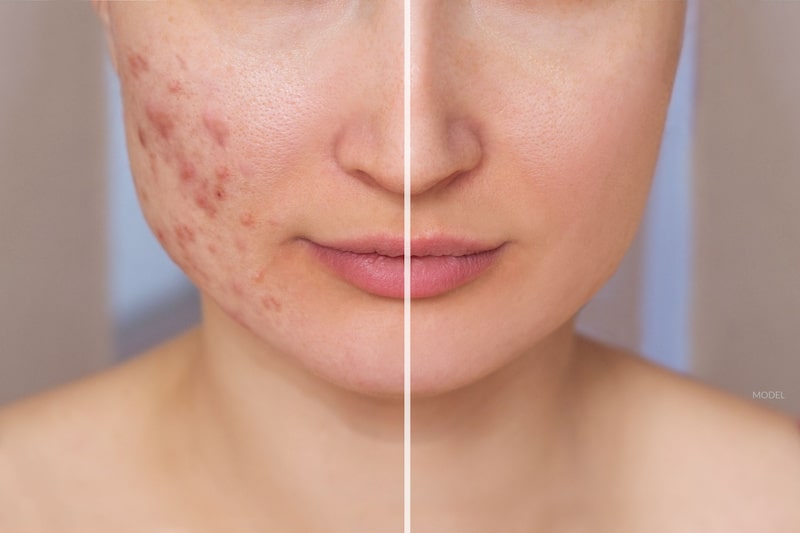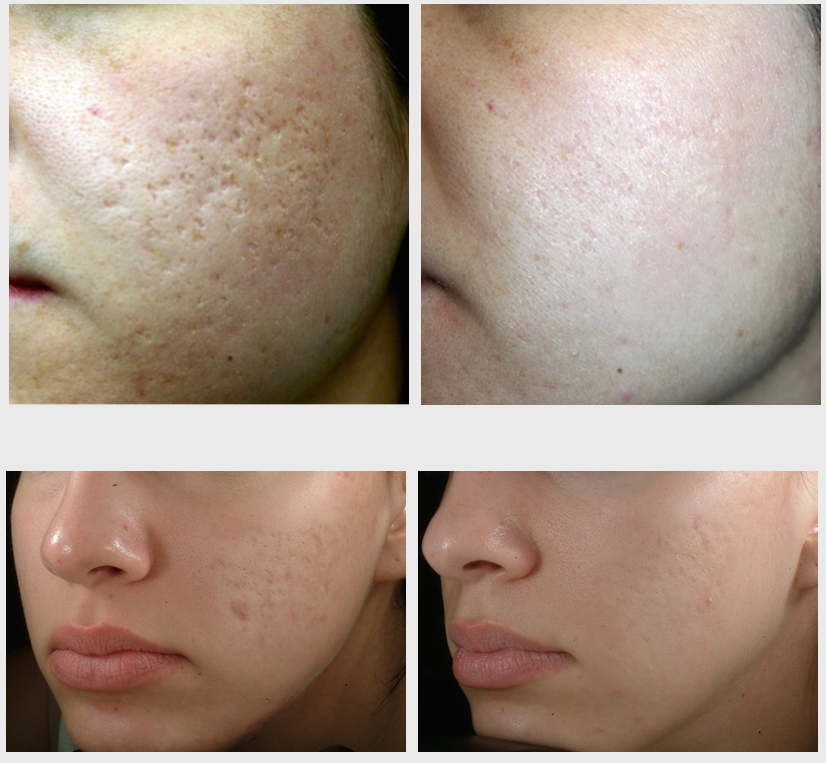Ideal Acne and Acne Scars Treatment: Recover Your Skin's All-natural Elegance
Ideal Acne and Acne Scars Treatment: Recover Your Skin's All-natural Elegance
Blog Article
Comprehending the Numerous Skin Disease and Reliable Treatment Options for Acne Marks
Acne scars represent an intricate interaction of skin conditions that dramatically effect individuals' self-worth and general skin health. As we discover the landscape of acne mark management, it becomes noticeable that the journey towards clearer skin might include more than simply topical options.
Types of Acne Marks
Acne scars can manifest in different forms, each requiring details treatment approaches. The 2 primary classifications of acne scars are hypertrophic and atrophic scars. Atrophic marks are defined by a loss of cells, leading to clinically depressed areas on the skin. These scars are more classified right into three subtypes: ice choice scars, which are deep and slim; boxcar marks, which are broader and have well-defined sides; and rolling marks, which develop a wave-like appearance due to unequal skin appearance.
On the other hand, hypertrophic scars result from an overflow of collagen throughout the recovery process, leading to increased areas on the skin. These scars are usually firm and can differ in color, often showing up red or darker than the bordering skin.

Root Causes Of Acne Scarring
Scarring occurs as a result of the body's all-natural recovery action to inflammation and injury caused by acne sores. When acne types, it sets off an inflammatory response, bring about the launch of different cytokines and growth variables that advertise healing. Nonetheless, this procedure can in some cases lead to too much tissue formation or poor fixing, leading to scars.
The primary reasons of acne scarring consist of the intensity of the acne itself, period of the lesions, and individual skin kinds. Extreme inflammatory acne, such as cysts and nodules, is most likely to lead to scarring because of deeper cells damage. Furthermore, inappropriate handling of acne lesions, such as picking or squeezing, can exacerbate cells injury and inflammation, increasing the probability of scarring.
Genetic proneness likewise plays a substantial function; people with a household background of scarring are at a higher threat. Additionally, skin kind and color can affect scar development, as darker skin tones may experience post-inflammatory hyperpigmentation, while lighter skin might develop atrophic marks.

Therapy Alternatives for Scarring
Reliable therapy choices for acne scarring vary depending upon the type and seriousness of the scars. Typically categorized into atrophic, hypertrophic, and keloid marks, these problems need customized approaches for optimum outcomes.
For atrophic marks, which are characterized by a loss of cells, therapies such as chemical peels, microdermabrasion, and laser therapy are typically employed. These methods advertise skin revival and stimulate collagen production, therefore visit this website boosting skin structure. Subcision, a minimally invasive treatment, can likewise be efficient by separating coarse bands underneath the skin.
Keloid and hypertrophic scars can be more testing to treat. Options consist of corticosteroid injections to reduce swelling and flatten the marks. acne treatment for sensitive skin. In some cases, cryotherapy or laser therapy might be recommended to decrease their appearance
Surgical alternatives are offered for severe scarring, where excision or skin grafting might be required. It's important for people to talk to a skin doctor to examine their specific mark type and go over the most ideal treatment strategy. Combining several therapies usually produces the ideal results, making certain that each client's unique skin problem is addressed successfully.
Natural Remedy and All-natural Solutions
Natural options and natural home remedy can supply an available method for people seeking to click to investigate enhance the look of acne marks. Different ingredients discovered in the home cooking area have actually shown potential benefits in enhancing skin structure and promoting healing.
Using fresh aloe vera gel straight onto the marks can help enhance skin hydration and reduce redness. Honey possesses all-natural anti-bacterial and moisturizing top qualities that can assist in scar recovery.
Another efficient option is lemon juice, which functions as a natural exfoliant and can lighten hyperpigmentation. It must be used meticulously, as it might trigger photosensitivity. Oatmeal masks are also beneficial; their mild peeling can assist remove dead skin cells while soothing irritability.
Crucial oils, such as tea tree oil and lavender oil, can better sustain scar recovery as a result of their antimicrobial properties. It is crucial to execute a spot test prior to using any solution to make certain there are no negative reactions. These all-natural services can be a complementary technique in the trip to decrease acne marks.
Avoiding Future Scarring
Taking on an aggressive approach to skin care can substantially reduce the threat of establishing future acne scars. One of the crucial strategies is to handle acne efficiently as it emerges (acne scars). This includes utilizing non-comedogenic skincare products and medications prescribed by dermatologists that target acne without aggravating the skin. Normal cleaning, peeling, and hydration can help preserve skin health and avoid clogged up pores.
In addition, avoiding the temptation to choose or press acne lesions is vital, as this can lead to inflammation and succeeding scarring. Rather, people should focus on applying topical therapies that advertise recovery and reduce inflammation. Active ingredients such as salicylic acid, benzoyl peroxide, and retinoids are recognized for their efficacy in handling acne and lessening marks.

Lastly, maintaining a healthy diet plan abundant in antioxidants and staying hydrated supports skin regrowth. By carrying out these safety nets, individuals can substantially decrease their risk of future scarring and promote overall skin health.
Final Thought
Finally, a look at this now detailed understanding of acne marks, incorporating both hypertrophic and atrophic kinds, is important for efficient treatment techniques. Tailored interventions, including expert therapies and home treatments, can substantially enhance skin look and structure. Safety nets likewise play a crucial role in minimizing future scarring. Assessment with a skin specialist stays necessary to design individualized strategies that consider specific skin kinds and mark extent, ultimately enhancing the efficacy of mark monitoring techniques.
Acne marks stand for a complicated interplay of skin conditions that significantly effect individuals' self-confidence and overall skin health and wellness. The two key groups of acne scars are atrophic and hypertrophic marks. These scars are more identified into three subtypes: ice choice marks, which are deep and narrow; boxcar scars, which are wider and have distinct edges; and rolling scars, which develop a wave-like look due to irregular skin appearance.
An extensive assessment with a skin specialist can aid determine the most proper intervention, taking right into account the person's skin kind, scar extent, and total skin health.
Consultation with a skin doctor remains essential to develop individualized methods that consider specific skin kinds and mark severity, eventually boosting the effectiveness of mark monitoring methods.
Report this page